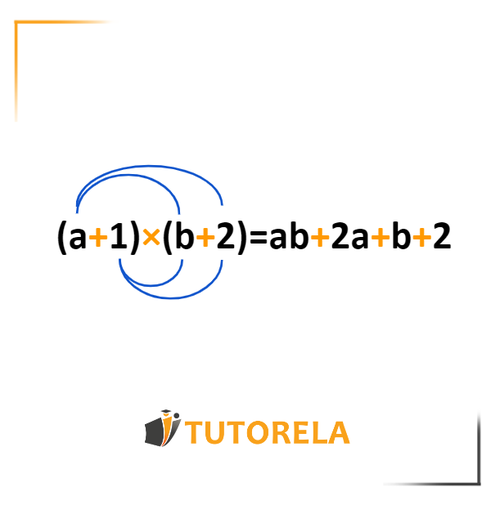In order to simplify the given expression, open the parentheses using the extended distribution law:
(a+b)(c+d)=ac+ad+bc+bd
Note that in the formula template for the above distribution law, it is a given that the operation between the terms inside of the parentheses is addition. Furthermore the sign preceding the term is of great significance and must be taken into consideration;
Proceed to apply the above formula to the expression to open out the parentheses.
(x−6)(x+8)↓(x+(−6))(x+8)Let's begin then with opening the parentheses:
(x+(−6))(x+8)x⋅x+x⋅8+(−6)⋅x+(−6)⋅8x2+8x−6x−48
To calculate the above multiplications operations we used the multiplication table as well as the laws of exponents for multiplication between terms with identical bases:
am⋅an=am+n
In the next step we'll combine like terms which we define as terms where the variable (or variables ), in this case x, have identical exponents . (Note that in the absence of one of the variables from the expression, we'll consider its exponent as zero power due to the fact that raising any number to the zero power yields the result 1) Apply the commutative property of addition and proceed to arrange the expression from highest to lowest power from left to right (Note: treat the free number as having zero power):
x2+8x−6x−48x2+2x−48When combining like terms as shown above, we highlighted the different terms using colors, as well as treating the sign preceding the term as an inseparable part of it.
The correct answer is answer A.
Answer:
x2+2x−48
